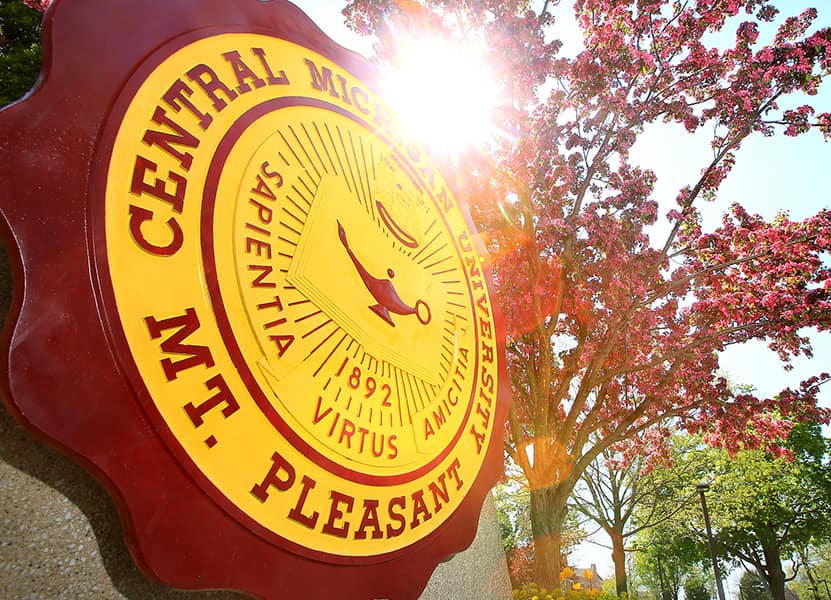Leonard Plachta Family Papers, 1929-2018 (Scattered), and undated
2.25 cubic feet (in 5 boxes)
This collection consists of the family papers of Leonard E. and Louise A. Plachta, providing a personal view into their childhoods, university experiences, married life and relationship with each other, friends, and relatives through their correspondence, and careers, mainly in Detroit and Mount Pleasant, Michigan. While most of the collection is in English, some correspondence, stories, family history and vital records, and school grades are in Polish. The collection is organized by creator and then alphabetically by topic and, finally, chronologically. Physically, the collection is in very good condition. Boxes 1-4 are letter-size .5 cubic foot and Box 5 is a letter-size .25 cubic foot box.
The Papers of Leonard E. Plachta:
The Papers of Leonard E. Plachta (in Boxes 1-3) includes his family history with family tree information, and his elementary grades (some in Polish) and high school grades and activities, such as childhood photographs and his Safety Patrol Pledge, Grade 7-8. His university materials included applications, in which he wrote about his hopes, dreams, interests, and lack of parental support to pursue a college degree. His university degrees and related commencement materials are included. There is one folder each of material documenting his wedding to Louise, and another his army training. We see some of his personal relationships with each other and family in Correspondence, from Leonard to Louise,; and in Correspondence, Personal to Leonard, Leonard and Louise.
The majority of his papers focuses his career at Central Michigan University (CMU His Annual Personal Data Report (Academic Accomplishments), are annual reports of his professorial academic accomplishments in the Business School. When he became Dean of the CMU Business School he wrote Some Thoughts on Becoming Dean of the School of Business Administration at CMU]. Photographs of Dean Plachta with students, other CMU faculty and administrators, and when he attended the Small Business Institute Award Dinners also document his time as dean.
Most of the CMU material is from his tenure as CMU president. When he became Interim President he received numerous congratulatory notes. Those retained in the collection are from CMU and Mount Pleasant people, among them former CMU Presidents Harold Abel and William B. Boyd, presidents of other universities, and Michigan politicians and businessmen. Other materials documenting his tenure as CMU president include: CMU Agreement with Universidad Autonoma de Guadalajara (student exchange program established), 1993; a Caricature by Paco; CMU Correspondence, Thank yous for Hospitality to Leonard and Louise from Alumni Class 1947 for their 50th Reunion; an invitation to the CMU Robert and Marjorie Griffin Endowed Chair in American Government Celebration Dinner; Morning Sun Interview Materials; Photographs in the collection document Awards and Recognition Events, one with Governor Jennifer Granholm, Commencements, 1992-1995, 1997; Groundbreaking, Official Building Openings and other events, Homecoming, 1995 and 1997; Students, Alums; and international visits to Villa Bosch, a conference center, in Heidelberg, Germany, and the Tatsuzawa Educational Establishments (Morioka Chou Senior High School),a preeminent private high school, in Morioka, Iwate Prefecture, Japan. Demands for his resignation in 1998 are documented in the folder labeled CMU Students Demand Plachta’s Resignation.
His retirement and honors received afterwards are documented by Awards and Certificates, Leonard and Louise together; CMU Correspondence, Congratulations Upon His Retirement; CMU Plachta Day, Dinner Invitation; CMU President Mike Rao, Goals, Strategic Plans, Correspondence. Certificates and awards, newspaper clippings, plaques, and CMU Correspondence- General span his entire career or entire life. There is one folder of materials from the semester he taught at Michigan State University. An overall view about him is provided by his obituary and self-generated biographical materials.
The Papers of Louise Plachta:
The Papers of Louise Plachta (in Boxes 4-5) document her family history in copies of her parents’ vital records, stories, and correspondence (some in Polish from her mother and other relatives), and secondary education with childhood elementary grades (some in Polish) and high school grades and class anniversary materials. Her University of Detroit materials include her degree. The one folder of their wedding material is filed under Leonard’s name. Her writing is documented in her English papers, Correspondence, and Stories, h Interview materials, Articles, and Speeches. Materials specifically related to her time at CMU include: Caricature by Paco, Brent Wisher; Certificates; her CMU Master of Arts Degree in Case; CMU Plachta Scholarships and Awards Materials; Identity Cards; her unofficial Correspondence, re: Leonard Resigning; all but one of her English papers; most of her Photographs and CMU Photo Identity Card; ‘Robert Frost and the rural’ CMU Bohannon Schoolhouse, Program, and Photographs; and two plaques. An overview of her life is found in her photographs, resume, and obituary.
Researchers may also be interested in the official CMU Office of the President Papers of Leonard E. Plachta, which are administrative in nature. For more detail please see that finding aid. Additional materials about both Plachtas may be found in multiple manuscript collections in the Clarke, especially those related to public relations, as well as digitized CMU publications. A copy of his 1964 dissertation, A search for a proper accounting for the issuance of stock dividends, is also available in the Clarke.
Processing Note: Approximately 1 cubic foot of materials were removed from the collection during processing including: miscellaneous financial information, pay raise requests, benefits information, letters of recommendation, generic travel mementos, generic correspondence, information with social security numbers, unidentified photographs, CMU publications (duplicates) and acidic materials, mainly newspaper clippings (copies were retained). Material of a more personal nature were returned to the donor as per the donor agreement.
